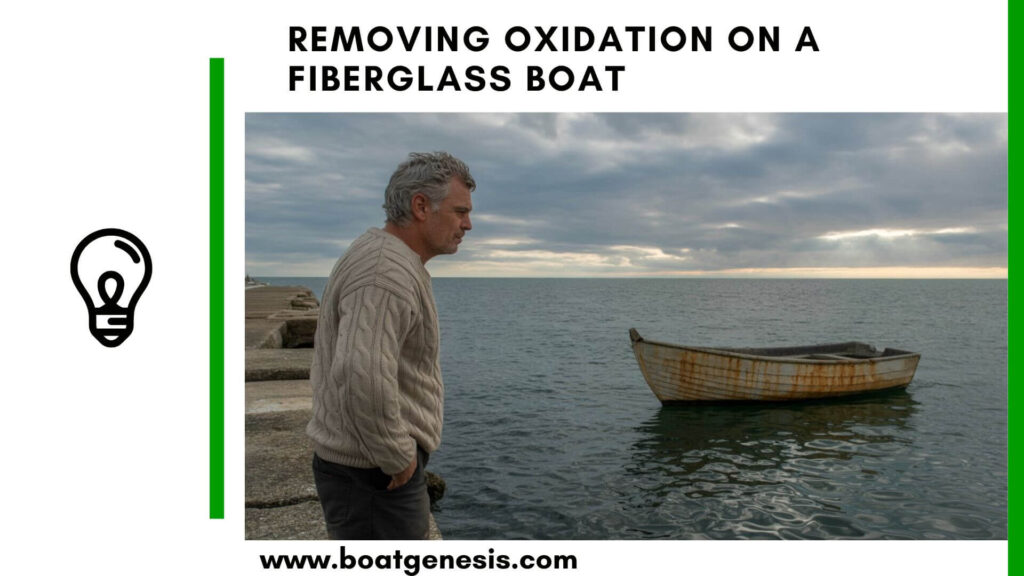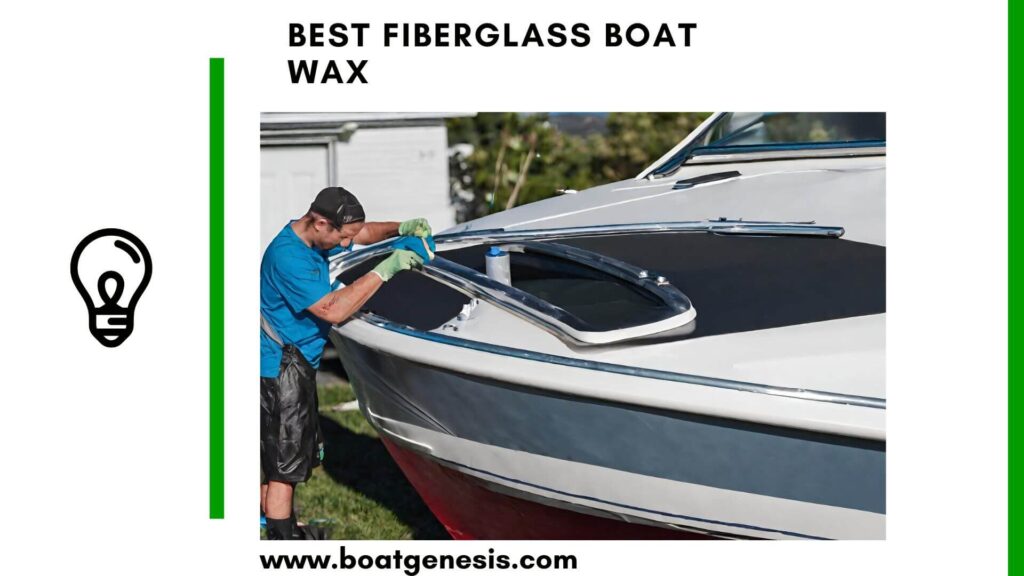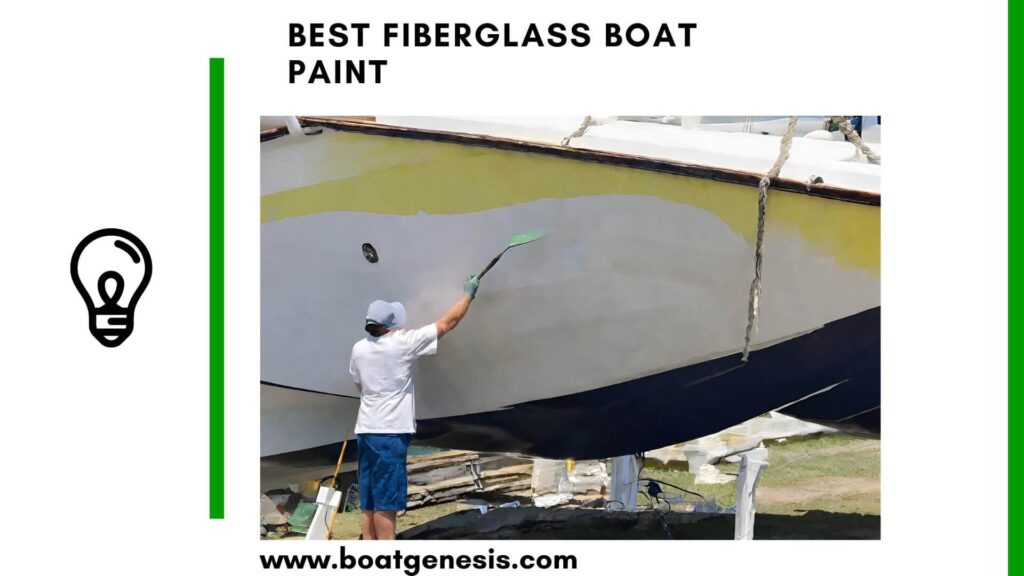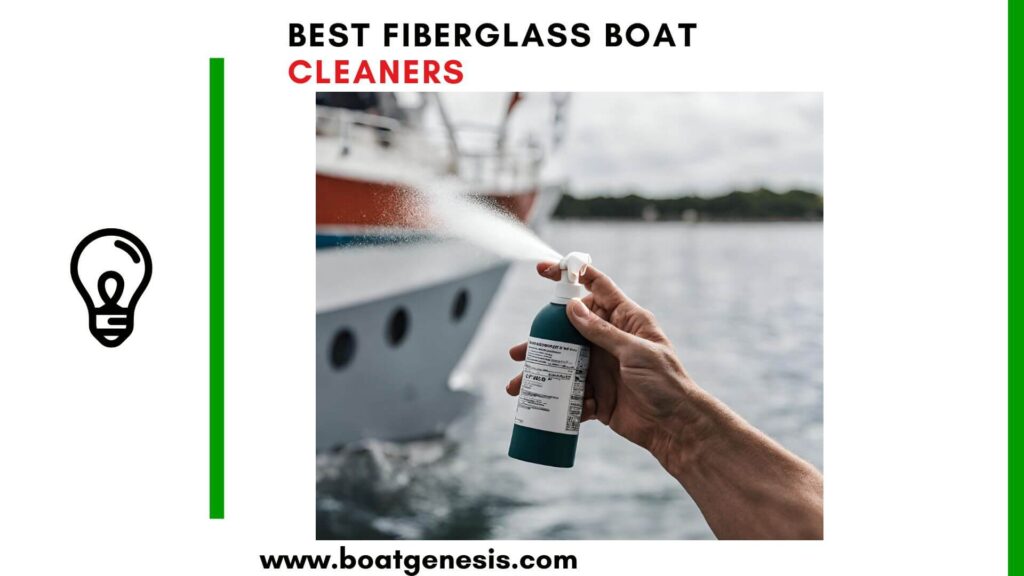If you own a fiberglass boat, you know nothing beats the feeling of seeing your vessel gleam under the sun. But over time, oxidation can sneak in, leaving your boat’s finish dull, chalky, and lifeless.
Removing oxidation on a fiberglass boat isn’t just about looks—it’s about protecting your investment and keeping your boat performing at its best.
In this guide, I’ll explain oxidation, how to remove it (step-by-step), and how to prevent it from coming back. I’ll also share some pro tips you won’t find elsewhere.
Key Takeaways
- Oxidation is a common problem for fiberglass boats, but it’s reversible.
- You’ll need the right tools, products, and a bit of elbow grease to restore your boat’s shine.
- Regular maintenance is the secret to preventing future oxidation.
- Professional tips can save you time, money, and effort.
- This guide covers both DIY and advanced techniques, including what most guides leave out.
- Key Takeaways
- What Is Oxidation on a Fiberglass Boat?
- Why Should You Remove Oxidation?
- How to Tell If Your Boat Has Oxidation
- Step-by-Step: Removing Oxidation on a Fiberglass Boat
- Maintenance: Keeping Oxidation Away
- Advanced Tips
- Common Mistakes to Avoid
- DIY vs. Professional Restoration: Which Is Right for You?
- The Science Behind Oxidation (And How to Outsmart It)
- Eco-Friendly Oxidation Removal
- Troubleshooting: What If the Shine Doesn’t Come Back?
- Real-World Maintenance Schedule
- Removing Oxidation on a Fiberglass Boat: Your FAQs Answered
- Final Thoughts
What Is Oxidation on a Fiberglass Boat?
Oxidation happens when the gelcoat (the outer layer of your boat’s fiberglass) reacts with oxygen, UV rays, and pollutants.
This chemical reaction slowly breaks down the surface, causing it to lose its gloss and turn chalky or faded. You might notice white streaks, dull spots, or even rough patches—these are all signs of oxidation.
The good news? Oxidation is totally treatable, especially if you catch it early.
Why Should You Remove Oxidation?
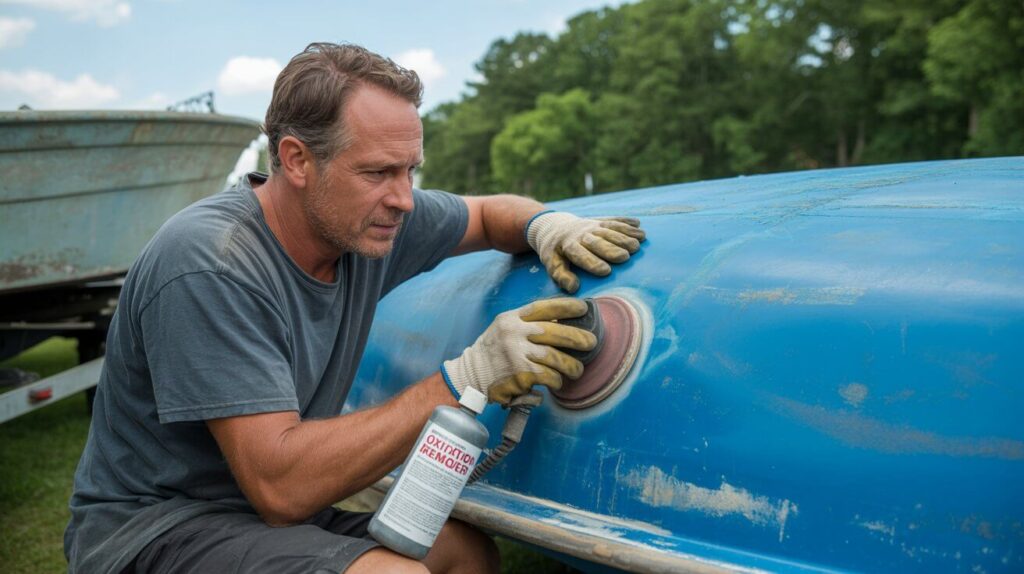
Ignoring oxidation isn’t just an eyesore; it can lead to bigger problems:
- Reduced resale value: A dull boat looks neglected.
- Weaker protection: The gelcoat shields your boat from water intrusion and UV damage. Once it breaks down, your hull is at risk.
- Higher repair costs: Severe oxidation can require costly professional restoration or even re-gelcoating.
Restoring your boat’s shine is about pride and protection.
How to Tell If Your Boat Has Oxidation
Before you dive into the fix, let’s confirm the problem. Here’s how:
- Visual check: Look for dull, faded, or chalky areas.
- Touch test: Run your hand along the hull. If it feels rough or powdery, that’s oxidation.
- Water bead test: Pour water on the surface. If it doesn’t bead up, your gelcoat has lost its protective layer.
Step-by-Step: Removing Oxidation on a Fiberglass Boat
Let’s get hands-on. Here’s how to bring back that showroom shine.
1. Gather Your Supplies
You’ll need:
- High-quality boat soap
- Soft-bristle brush or sponge
- Chemical oxidation remover or rubbing compound
- Dual-action polisher or buffer (optional, but highly recommended)
- Microfiber towels
- Boat polish
- Marine wax or sealant
- Safety gear (gloves, eye protection)
2. Wash the Boat Thoroughly

Start with a clean slate. Use a boat-specific soap to remove dirt, salt, and grime. Avoid dish soaps—they strip away protective wax.
3. Assess the Level of Oxidation
Not all oxidation is equal. Light oxidation looks slightly faded. Heavy oxidation is chalky and rough. The severity will determine your next steps (source).
4. Apply an Oxidation Remover or Rubbing Compound
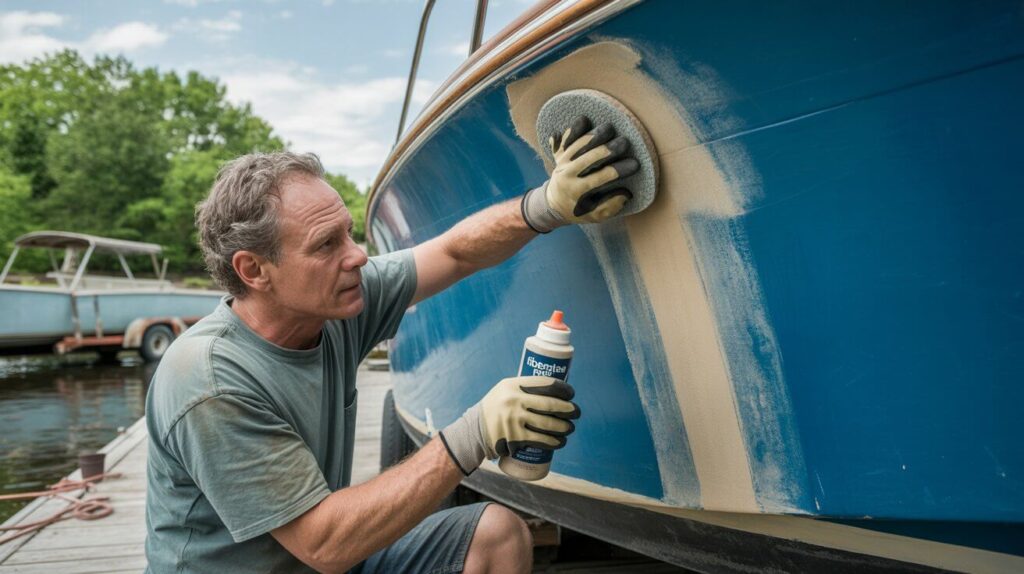
For light to moderate oxidation, a chemical oxidation remover or rubbing compound will do the trick.
Apply a small amount to a foam pad or microfiber cloth and work it into the surface in circular motions. For best results, use a dual-action polisher—this saves time and gives a more even finish.
- Pro tip: Work in small sections (2×2 feet) to keep the product from drying out.
- Don’t rush: Let the compound do the heavy lifting.
5. Wet Sanding for Severe Oxidation
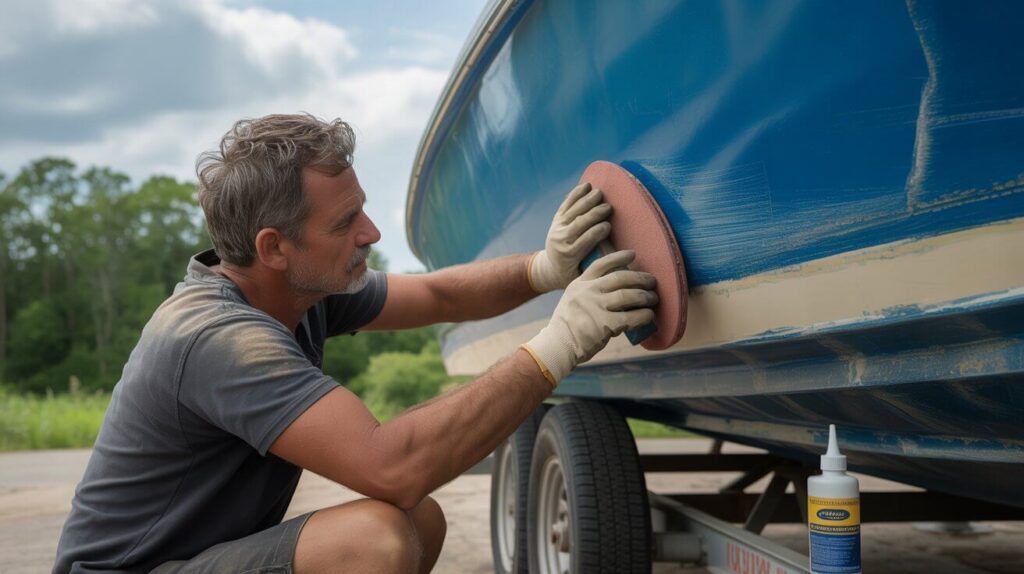
If your boat’s hull is heavily oxidized, wet sanding may be necessary.
This sounds scary, but with the right grit (start with 1200 and move up to 2000), it’s safe for gelcoat. Always keep the surface wet, and sand lightly in one direction.
- Insider tip: Most guides skip this, but after wet sanding, always use a compound to remove sanding marks, then polish for maximum gloss (source).
6. Polish the Surface
Once the oxidation is gone, polish the fiberglass to restore depth and shine. Use a dedicated boat polish and a clean pad. Buff in overlapping passes until the surface gleams.
7. Protect with Marine Wax or Sealant
This is the step many skip! Waxing seals the gelcoat, blocks UV rays, and makes future cleaning a breeze.
Choose a high-quality marine wax or polymer sealant and apply it according to the manufacturer’s instructions.
Maintenance: Keeping Oxidation Away
Now that your boat is sparkling, let’s keep it that way:
- Wash regularly: Rinse off salt, dirt, and grime after every outing.
- Wax at least twice a year: This is your best defense against UV and oxidation.
- Store under cover: If possible, keep your boat out of direct sunlight.
- Spot-treat trouble areas: If you notice dull spots, tackle them early.
Advanced Tips
1. Use UV-Blocking Products
Many boaters don’t realize that not all waxes are created equal. Look for products with UV inhibitors for long-term protection.
2. Try a Ceramic Coating
For ultimate protection, consider a marine-grade ceramic coating. It’s more expensive up front but can last up to two years and offers superior defense against oxidation, stains, and fading.
3. Address Metal and Trim
Oxidation doesn’t just affect fiberglass. Chrome, stainless steel, and aluminum trim can also oxidize. Use a specialized metal polish to keep these areas looking sharp.
4. Keep a Maintenance Log
Record when you polish, wax, or spot-treat your boat. This simple habit can save you time and money by catching problems early.
Common Mistakes to Avoid
- Using household cleaners: They can strip wax and damage the gelcoat.
- Skipping polish: Compounding removes oxidation, but polish restores clarity.
- Neglecting regular maintenance: Prevention is always easier than restoration.
- Applying products in direct sunlight: Always work in the shade for best results.
DIY vs. Professional Restoration: Which Is Right for You?
DIY: If your oxidation is light to moderate, most boat owners can handle the process with patience and the right tools. It’s cost-effective and rewarding, plus you get to know your boat better.
Just remember: don’t rush, and always follow product instructions.
Professional Help: For severe oxidation, deep scratches, or if you’re short on time, hiring a professional detailer can be worth the investment.
They have access to commercial-grade products, specialized equipment, and years of experience restoring even the most neglected boats. Sometimes, a pro can save you from costly mistakes, especially if wet sanding or heavy compounding is needed.
The Science Behind Oxidation (And How to Outsmart It)
Most guides stop at the “how,” but let’s talk about the “why.” Oxidation is a chemical reaction where free radicals (unstable oxygen molecules) break down the polymers in your gelcoat.
UV light, salt, and pollution accelerate this process. By using polishes and waxes with UV inhibitors, you’re literally putting a shield between your boat and these destructive forces.
Info: Did you know that certain colors oxidize faster? Darker hulls absorb more UV, so they’ll show signs of oxidation sooner than white or light-colored boats.
If you own a navy blue or black boat, you might need to wax more often and use products with extra UV protection.
Eco-Friendly Oxidation Removal
Many boaters are concerned about the environment, and rightly so. Some compounds and polishes contain harsh chemicals that can harm aquatic life.
Look for biodegradable, eco-friendly products whenever possible. Wash your boat on land or use containment mats to prevent runoff into the water.
Pro tip: Citrus-based cleaners can help break down light oxidation and are less harmful to marine ecosystems.
Troubleshooting: What If the Shine Doesn’t Come Back?
Sometimes, even after compounding and polishing, your boat still looks dull. Here’s what could be happening:
- Gelcoat is too thin: Years of sanding or polishing can wear down the gelcoat. If you can see fiberglass fibers, it’s time for professional re-gelcoating.
- Oxidation is too deep: Severe neglect may require wet sanding or even refinishing.
- Residue left behind: Make sure to thoroughly wash and wipe down between each step.
- Wrong products: Not all compounds and polishes are created equal. Stick to reputable marine brands.
Real-World Maintenance Schedule
Here’s a practical maintenance schedule to keep your boat’s fiberglass looking its best:
Every Outing:
- Rinse off salt and debris with fresh water.
- Spot check for new dull spots or stains.
Monthly:
- Wash with marine soap.
- Inspect for signs of oxidation or damage.
Twice a Year:
- Deep clean, polish, and wax the entire hull.
- Address any minor oxidation immediately.
Annually:
- Consider professional detailing if you notice stubborn oxidation.
- Apply a ceramic coating for maximum protection.
Removing Oxidation on a Fiberglass Boat: Your FAQs Answered
You shouldn’t need to “remove” oxidation if you maintain your boat regularly. Wash after each use and wax at least twice a year.
The areas that get the most direct and prolonged sun exposure are most prone to oxidation. This includes topsides, decks, console tops, radar arches, rail caps, etc. Areas under covers or out of the sun are less likely to oxidize.
Check for visible whitish, chalky spots or areas that have lost their glossy sheen, especially in areas of greater sun exposure. Rub your hand over suspect areas to see if a white residue comes off on your fingers, indicating oxidation. Compare suspect areas to those less exposed to judge color/gloss difference.
At first, oxidation only damages the gelcoat surface layer, acting as a cosmetic eyesore. But if left alone too long, oxidation can penetrate deeper into the fiberglass, causing more expensive repairs and permanent damage. Catching it early is key.
It’s tempting to grab car products, but it’s not the best idea. Marine environments are much harsher than what your car faces, so marine-specific compounds, polishes, and waxes are formulated to withstand salt, sun, and constant water exposure. Automotive products might offer a quick shine, but they won’t last and could even harm your gelcoat over time.
Final Thoughts
Removing oxidation on a fiberglass boat isn’t just about aesthetics—it’s about pride, protection, and performance.
With the right approach, you can restore your boat’s shine and keep it looking great for years to come.
Remember, regular maintenance is always easier (and cheaper) than a full restoration.
Don’t wait until your boat turns chalky—start your maintenance routine today, and you’ll spend more time enjoying the water and less time scrubbing the hull.

Founder of BoatGenesis, Warren has hands-on experience in fiberglass boat repairs, marine equipment testing, and powerboat building. Learn more about Warren.

